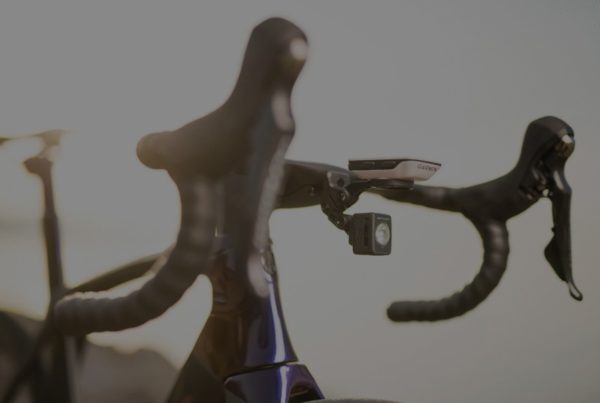A new year is underway and so is a new season of bike racing. For most of us, racing is still a ways away, but group rides are already heating up.
For some of us, that can present a problem. Group rides mean different things to different riders. Seasoned racers will be getting in base miles with an eye toward fitness for the first races, which may still be a few months away. Other riders see group rides as a race, and to ‘win’ the group ride is the goal, no matter the month. With these differing motivations, the group behavior can be a bit schizophrenic; this can be dangerous and leave a horrible impression especially with the non-cycling public.
What kind of group rider are you?
Back when I was racing, we would often start the preseason in the warmth of California, and riding with locals who were already in form and ready to race presented a few immediate challenges, which both had to do with self-control. The first was having the discipline not to go into full race mode — after all, I had to be at peak form in July, not January. The second challenge is what I write about now, the individual’s contribution to an unruly group ride.
Those early season group rides in winter sun quickly turned into races that completely ignored all rules of the road, and even if you were simply following wheels near the back, you would be part of group that was behaving like an unruly mob, having taken over the road. When motorists complained, they would be ignored or worse yet, flipped off.
Now that cycling is mainstream, group rides can be found everywhere in the country, and while a commendable number of these are law-abiding and controlled in their behavior, others continue to be a problem. Within the group, Seasoned riders may try to maintain some safe decorum, but with so many newbies with expensive bikes, athletic backgrounds, and egos to feed, the rides can be chaotic.
It is easy to see how cyclists literally get swept up into contributing to behavior that is abhorrent and out of character. Add to the mix self-interest and egos that need to be stroked, and you have a recipe for disaster.
Those who join a ride that ignores the rules of the road and violates the right-of-way of people in motor vehicles, on foot, or even also on a bike, should realize that they are contributing to a malady that can have permutations that extend well beyond short-sighted ambitions like making the front group, ‘beating’ a higher category rider, or ‘winning’ the group ride. These negative externalities include souring the public to our presence on the road, leading to retaliatory behavior, exposure to legal liability, and even legal assaults on our very right to the road.
This behavior creates an enormous public-relations problem for us with the general public and with their legislative representatives. We have a constitutional right to the road, as I established in my book “Bicycling & the Law.” However, that doesn’t stop various legislatures from passing anti-cycling laws, and the more egregious our behavior, the more legislators will hear from their constituents. And of course, being roadies, we are the most immediately identifiable of the various cycling tribes.
There is something about riding in a group that creates a dangerous dynamic. Instead of being one rider responsible for your own choices, you are but a single member of a group, and the ‘group’ has its own identity. While you may never choose to illegally sprint through a red light on your own, when you are in a group you are following a wheel, holding your position, maintaining the gap you worked so hard to establish. Typically, the riders making the critical decisions are those at the head of the group. Therefore the pace and style of the ride can be determined by whoever is feeling frisky, except in controlled group rides, which are becoming more common.
But what can you do as a single cyclist? If you drop off the ride will it change anything?
The combination of adrenaline, and operating a bicycle at speed while at maximum effort can lead to bad decisions, and this is without considering the effect of the group on the individual. Waiting until you are caught up in the mix is not the best time to consider who you are as a rider and your role in group scofflaw riding.
Instead, be like the pros who don’t allow themselves to get sucked into an ego-driven pre-season “race” on a training ride, and ask yourself some questions now, as the new season begins. Do you want to go with the pack even when it is breaking the law, endangering other road users, alienating the public and giving our sport and mode of transport a bad name? And if you answer in the negative, what can and should you do? Drop off the ride? Talk to the offenders? Attempt to curb the group’s behavior? These are all questions best asked when you are closer to base heart rate and not when at threshold. That’s when you can best think about what kind of group rider you are, and what kind you want to be.
Remember, while you personally may be able to avoid being ticketed for your part of a group ride that violates traffic laws (this isn’t always the case), individual riders on group rides that have injured pedestrians, other cyclists or caused a motor vehicles to lose control have personally been sued. Because the injured party in these actions can rarely specify who caused their injuries they will name, in their suit, any riders they can identify from the group. Under a different theory of law lawsuits in these cases will also seek to attach legal liability to clubs, shops and even racing teams that are, in some way, affiliated with the group ride. Not exactly the best way to attract and keep sponsorship for our sport.
To the extent you participate in out-of-control group rides you are a part of the problem and you unwittingly give ammunition to anti-cycling legislation and injure our public perception.
This article, Legally Speaking with Bob Mionske: Group ride etiquette, was originally published on VeloNews on February 8, 2016.
Now read the fine print:
Bob Mionske is a former competitive cyclist who represented the U.S. at the 1988 Olympic Games (where he finished fourth in the road race), the 1992 Olympics, as well as winning the 1990 national championship road race.
After retiring from racing in 1993, he coached the Saturn Professional Cycling team for one year before heading off to law school. Mionske’s practice is now split between personal-injury work, representing professional athletes as an agent and other legal issues facing endurance athletes (traffic violations, contract, criminal charges, intellectual property, etc.).
Mionske is also the author of “Bicycling and the Law,” designed to be the primary resource for cyclists to consult when faced with a legal question. It provides readers with the knowledge to avoid many legal problems in the first place, and informs them of their rights, their responsibilities, and what steps they can take if they do encounter a legal problem. If you have a cycling-related legal question please send it to Bob, and he will answer as many of these questions privately as he can. He will also select a few questions to answer in this column. General bicycle-accident advice can be found at bicyclelaw.com.
Important notice:
The information provided in the “Legally Speaking” column is not legal advice. The information provided on this public website is provided solely for the general interest of the visitors to this website. The information contained in the column applies to general principles of American jurisprudence and may not reflect current legal developments or statutory changes in the various jurisdictions and therefore should not be relied upon or interpreted as legal advice. Understand that reading the information contained in this column does not mean you have established an attorney-client relationship with attorney Bob Mionske. Readers of this column should not act upon any information contained in the website without first seeking the advice of legal counsel.




